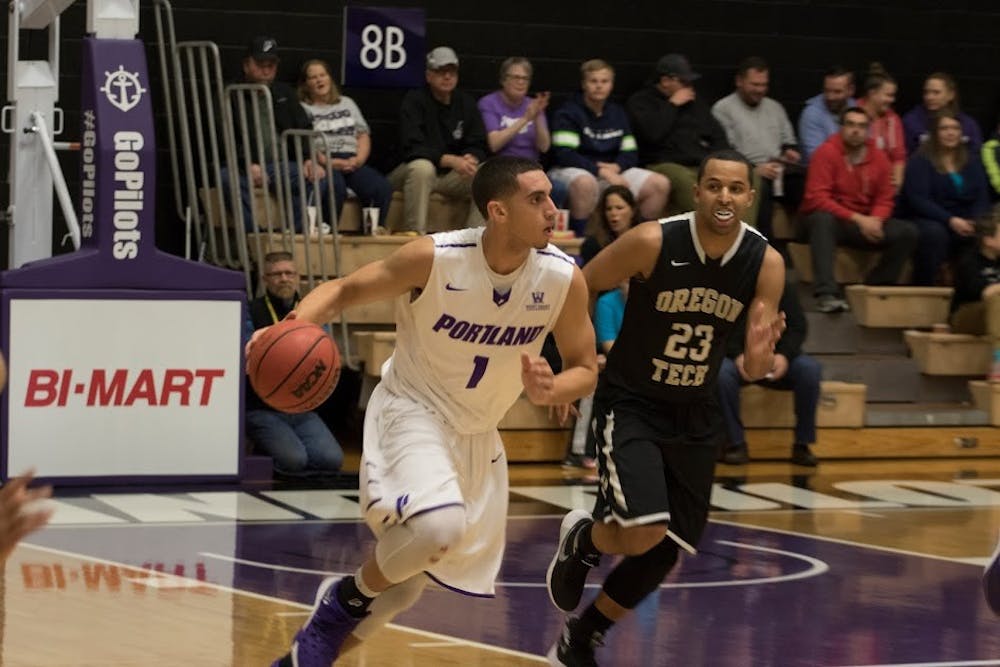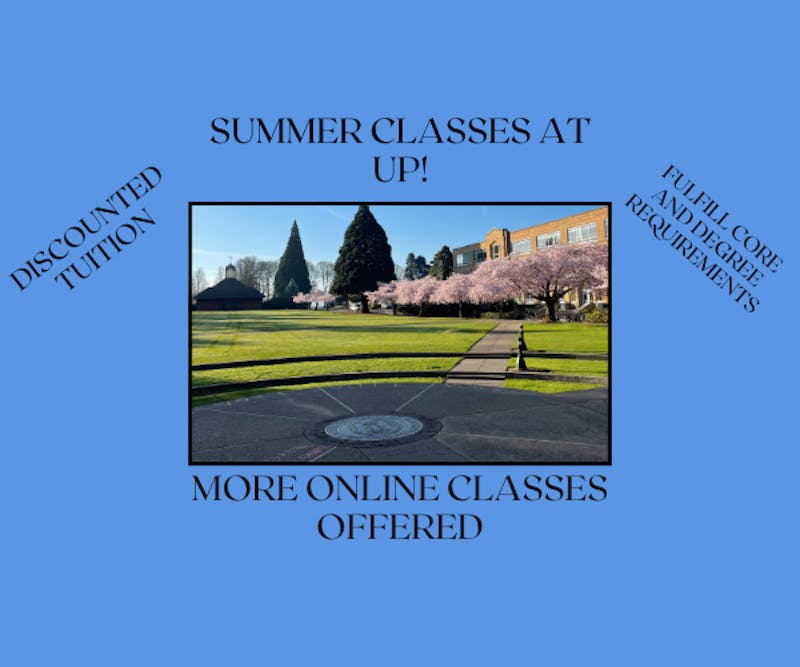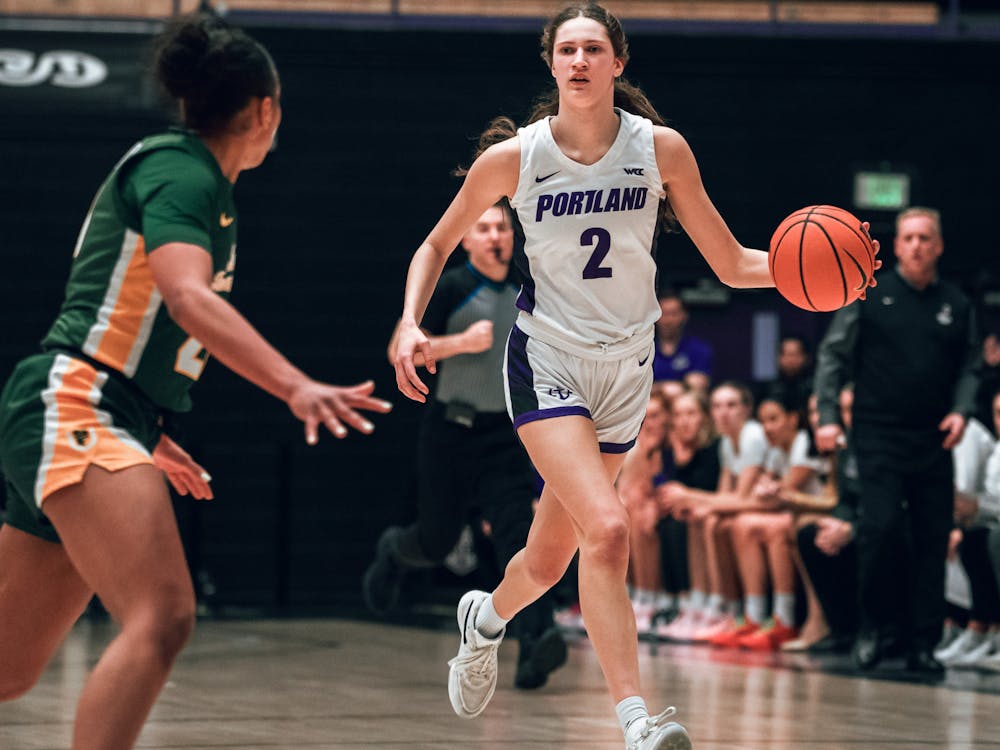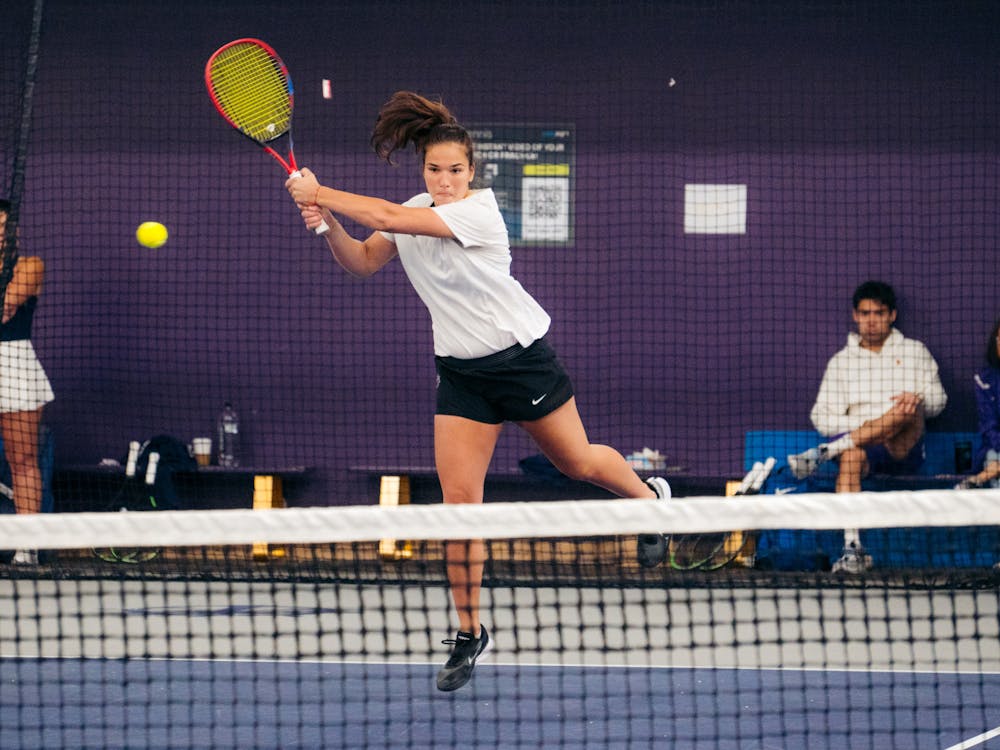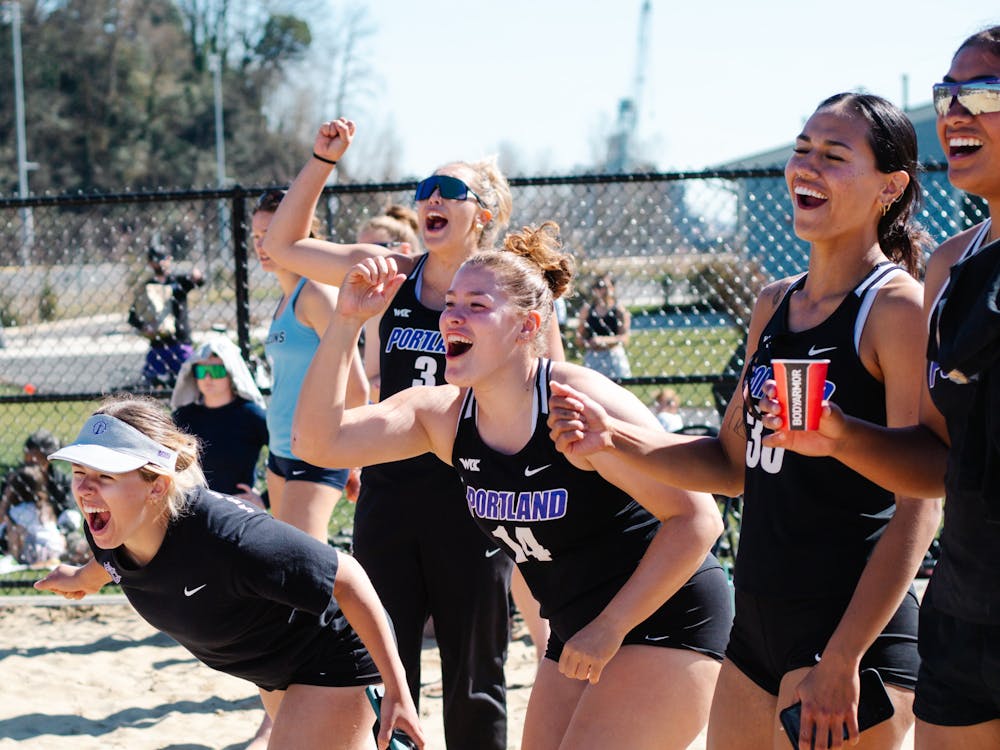by Ben Arthur |
The alarm reads 7:05 a.m.
Sophomore volleyball player Hannah Troutman blinks to clear the sleep from her eyes. It’s Monday morning. She has to be at the gym to lift with her team in less than an hour. She drives to Chiles Center. Lift ends at 9 a.m. Troutman has to be in organic chemistry at 9:15.
“I go from 8 a.m. to 9 p.m. on Mondays with a two hour break,” Troutman said.
With the rigorous schedule of sports and school, NCAA Division I athletes have a lot on their plate. Still, there is a reason they are called “student athletes.” They are students first, athletes second.
At least, that’s the way it is at UP.
It’s a balancing act, but a tightrope University of Portland student athletes walk better than most.
The Graduation Success Rate released by the NCAA this month reported that UP graduates 93 percent of student athletes. UP ranked third in the WCC behind Gonzaga (97 percent) and Santa Clara (95 percent) and ranked seven percent higher than the national average of 86 percent. This data is based on athletes from 2008-2014.
A number of bigger schools have been plagued with student athlete academic fraud. The University of Portland, on the other hand, has kept its hands clean. The UP Athletics Department has helped athletes to foster a balance. Over time, this has earned UP’s student athletes a reputation for higher scores on tests than on the court.
UP isn’t an athletic powerhouse.
The Power Five conferences consist of the SEC, Big 12, Pac-12, Big Ten and ACC. What those conferences have that the WCC does not, with the exception of BYU, is football.
Junior cross country runner Alan Castilleja came to The Bluff this year after spending his first two years at Texas Christian University, a football powerhouse.
Castilleja said that there is a divide between athletes and the rest of the student body, particularly with the football players. His experience as a WCC athlete is a sharp contrast to his time in the Big 12.
“At Power Five (conference) schools, student athletes are treated a step above students,” Castilleja said. “At UP, it’s more egalitarian.”
Student athletes may be celebrities at many of the Power Five conference schools, but with wins come bragging rights.
The UP cross country team has been able to maintain high GPAs and low race times, which earned them a third place national finish last year.
That balance hasn’t come as easily to the men’s basketball team.
In an article by Jason Quick last year, men’s basketball head coach Eric Reveno said that recruiting a player that is talented on both the court and in the classroom is doing things “the right way.”
That right way means not bending the rules when it comes to academics and finding players that can compete in both arenas.
“Our margin of error is thinner than other places,” Reveno said. “Academically, the number of kids that could be successful at UP is smaller than at other schools.”
Still, the team has only made the NCAA tournament twice, the last time being in 1996.
Part of the way UP has done it “the right way” is by not having majors that are specific to athletes. While many schools have created majors for athletes or pushed them through “easy” majors, there are student athletes in every professional school and the College of Arts and Sciences at UP.
“We don’t have one or two athlete majors (at UP),” Leykam said. “We’re proud of this because there is no simple path. Our academic staff talks to each and every one of our student athletes to find the degree that they can use in their future.”
Of the 281 student athletes on The Bluff, 126 are in the College of Arts and Sciences, 96 in business, 36 in engineering, 15 in the School of Nursing and nine in education.
Senior basketball player Sara Hernandez said that academic excellence is the culture at UP.
“The (UP) Athletics Department cares more about what you’re doing in school than on the court,” Hernandez said. “They want you to be a good student first.”
Still, being dominant on the court and in the classroom are not mutually exclusive. Gonzaga men’s basketball made it to the Elite 8 in last year’s NCAA tournament and also led the NCAA in athletics graduation rate.
The small community vibe on The Bluff has helped lead to athlete success in the classroom.
As a transfer from Oregon State University, Troutman recalls having classes of 300-400 people. Now, at UP, having 30 students in a class has helped her academically.
“The personal relationships you hold with teachers and students here really makes a difference,” Troutman said.
Alison Knoedler, the director of academic and student athlete development, said academic excellence starts with the athletes themselves.
“We’re picking student athletes that are academically-driven as well as athletically driven,” Knoedler said. “They’re coming in with that desire to be good students in the first place so that is huge.”
One of the biggest challenges for UP athletes is finding time to study. Practice, weightlifting, film sessions and games all take from time that could be dedicated to the books.
Sleep also suffers.
A recent Pac-12 study found that student athletes are spending an average of 50 hours per week to their sport while in season. In the same study, 71 percent of athletes reported lack of sleep as the number one obstacle to attaining their athletic and academic potential.
Reveno is sympathetic to the struggles of his players and other student athletes on campus.
“There is a little bit of a fallacy that time management is so critical because (student athletes) don’t have time to manage,” Reveno said.
There is an added burden on road trips because athletes have to to get their homework done on top of their game schedule and additional practices.
Even with three full years on The Bluff, exhaustion is still a challenge for senior men’s basketball player Bryce Pressley.
“Having a two-and-a-half, three hour practice and then going to class right after is tiring,” Pressley said. “It’s hard to stay awake sometimes. You have to be mentally focused and dialed in.”
Despite the time crunch, UP athletes still manage to maintain a high academic standard. The NCAA requires that student athletes maintain a 2.0 GPA to remain eligible to play. Last academic year, UP student athletes averaged a 3.2 GPA.
To be on the WCC All-Academic team, an athlete is required to have a cumulative 3.2 GPA, be at least a sophomore and a significant contributor on their squad. The cross country teams have found success in the classroom as well, with 14 of 58 runners getting academic honors.
Sophomore cross country runner Lauren LoRocco was one of two Pilots to make the 10-person women’s All-Academic Team. As a mechanical engineering major, she credits her academic accomplishments to completing her homework ahead of time.
“I try to use the weekend to get my work done that is due Monday through Wednesday because I’m really busy once the week starts,” LoRocco said.
There are a number of academic resources to help student athletes achieve maximum success. Many of UP’s sports teams hold weekly study halls in addition to help offered by the Shepard Academic Resource Center. UP student athletes find tutoring beneficial because of its flexibility. “I have had a tutor for different classes every semester that I have been in college,” Pressley said.
Hernandez said she sees the women’s basketball team’s weekly academic meetings, where players compete for the highest GPA, as incentive to do well in class.
“It helps us because we want our (academic) team to do well,” Hernandez said. “The coaches say we better not get a B or C because they will trade us if we do.”
Although it’s hard for UP student athletes to manage athletics and academics, it is what they signed up for. They are expected to perform at the highest level academically and athletically.
It’s a balancing act with rewards.
“We don’t get to go out as much as other students, but we’re also on scholarship,” Pressley said. “We’re attending a great university and playing a sport so there is a balance of everything.” Ben Arthur is a sports reporter for The Beacon. He can be reached by email at arthur17@up.edu or twitter @KingArthur_425



